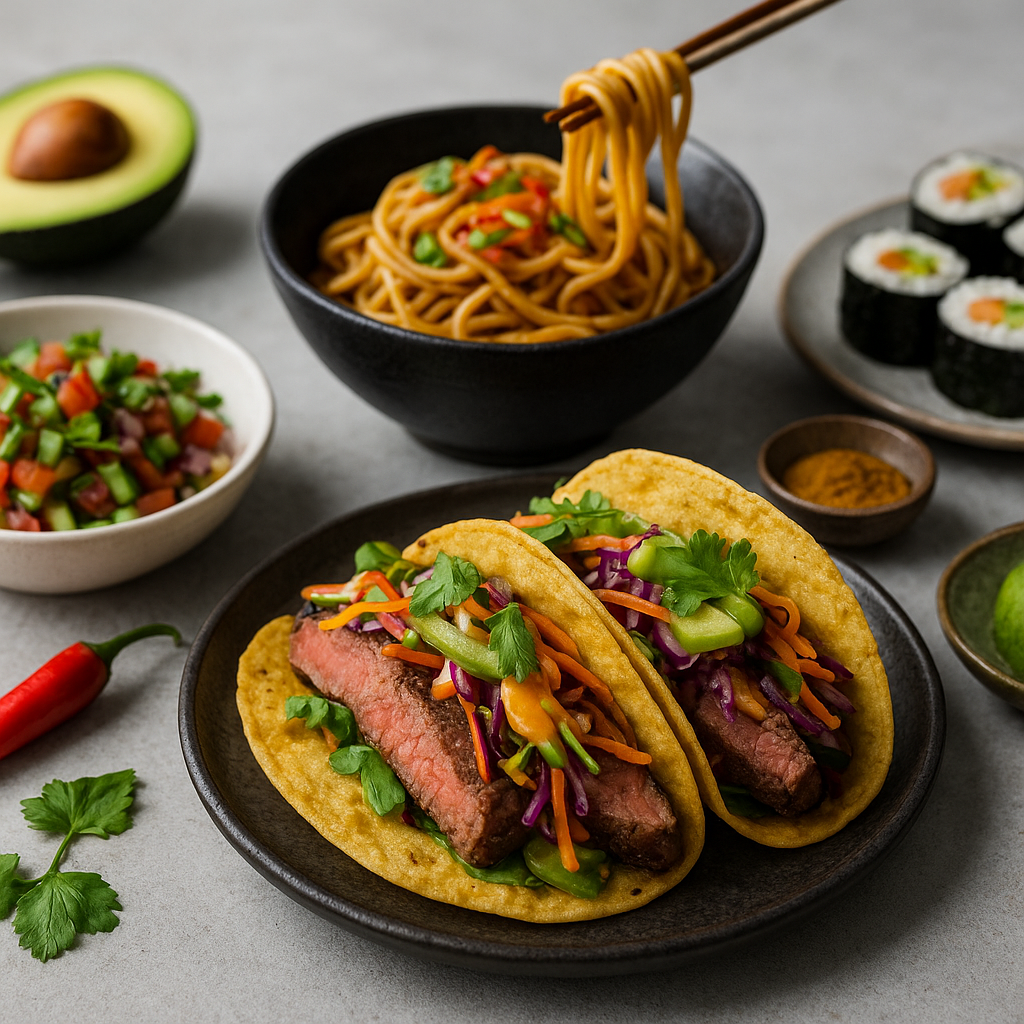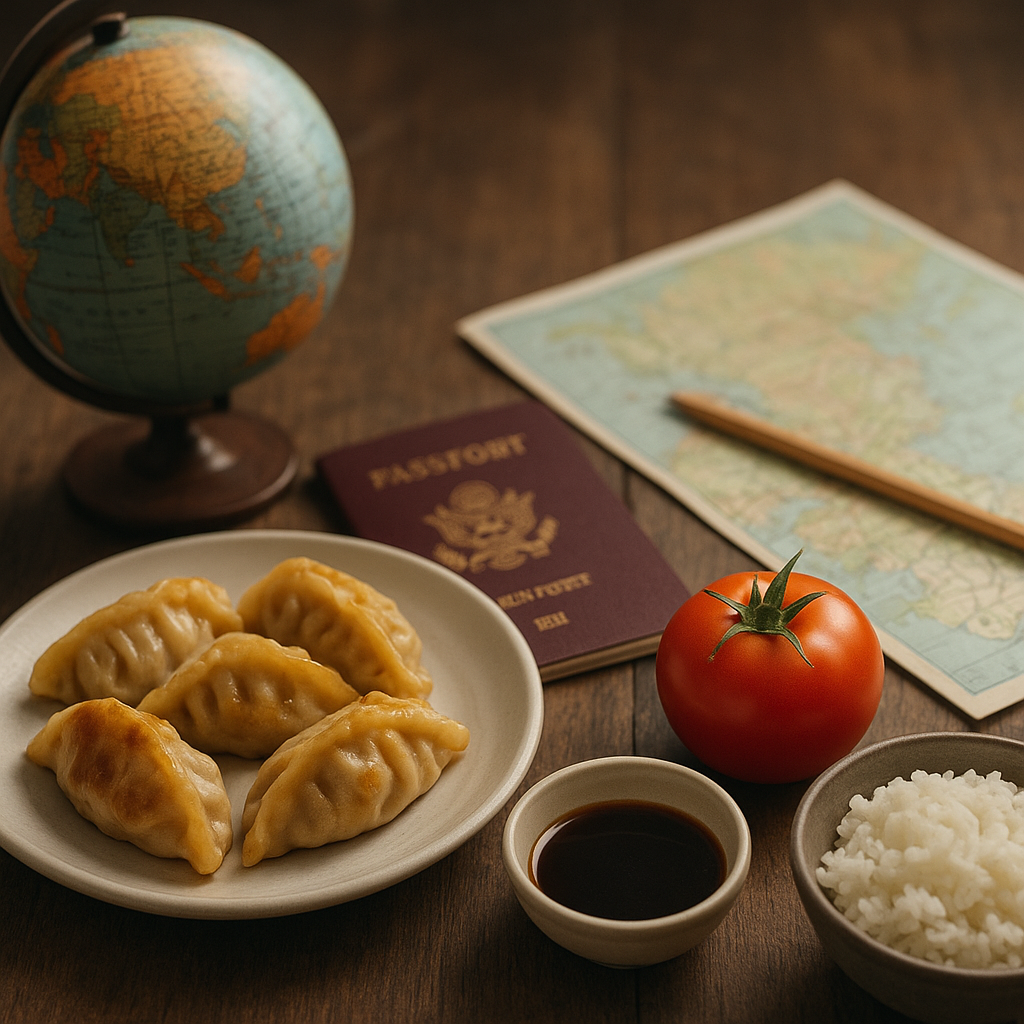Exploring Global Culinary Trends: Fusion Foods and Beyond
As global culinary landscapes evolve, fusion foods emerge as a testament to cultural interconnectedness. This article delves into the latest trends shaping the gastronomic world, highlighting fusion cuisine's role in modern dining experiences and its impact on cultural exchange.

The Rise of Fusion Cuisine
Fusion cuisine, a blend of culinary traditions from various cultures, has gained immense popularity over recent years. Originally an experimental approach to cooking, it has now become a prominent feature in many restaurants worldwide. Chefs increasingly seek to combine flavors and ingredients from different culinary heritages, creating unique dishes that reflect a more global palate.
Current Trends in Global Cuisine
Several trends characterize the contemporary culinary scene:
- Plant-Based Innovations: The growing demand for plant-based offerings has led to innovative fusion dishes, incorporating international flavors to create new vegetarian and vegan options.
- Global Street Food Inspirations: Chefs are drawing inspiration from street food cultures around the world, incorporating accessible cooking techniques and exotic flavors into their menus.
- Regional Authenticity: While fusion cuisine thrives, there is a concurrent movement towards celebrating regional authenticity, with local chefs highlighting traditional dishes and cooking methods alongside fusion styles.
Flavor Pairings
The success of fusion cuisine often hinges on finding harmonious flavor pairings. Here are some popular combinations currently captivating diners:
- Mexican-Korean Tacos: These tacos feature spicy gochujang marinated bulgogi, topped with fresh salsa and avocado for a delightful twist.
- Japanese-Peruvian Ceviche: This dish melds traditional ceviche techniques with Japanese flavors, incorporating miso and sesame for deeper umami notes.
- Indian-Chinese Noodles: Known as "Hakka noodles," this dish showcases stir-fried noodles tossed with Indian spices and fresh vegetables, representing Indo-Chinese influences.
The Impact of Cultural Exchange
Fusion foods not only elevate dining experiences but also foster cultural exchange. By uniting distinct culinary traditions, they help promote understanding and appreciation for diverse cultures. This trend has been propelled by increased global travel, social media, and a heightened interest in culinary arts across the globe.
Challenges and Criticisms
Despite its popularity, fusion cuisine faces criticisms. Some purists argue that blending culinary traditions can lead to the dilution of authentic flavors. Critics also highlight the importance of respecting cultural origins rather than appropriating them. Chefs are now more aware of these issues, approaching fusion with a sense of responsibility and cultural sensitivity.
Innovative Chefs Leading the Trend
Several chefs are at the forefront of the fusion cuisine movement, pushing boundaries and redefining contemporary dining. Notable figures include:
- David Chang: Renowned for his Momofuku restaurants, he expertly blends Korean and Japanese influences with American comfort food.
- Éric Ripert: His seafood-centric menus often fuse Asian flavors with classical French techniques.
- Sarah Copeland: An advocate for plant-based cuisine, she creates vibrant fusion recipes that celebrate global ingredients.
The Future of Fusion Foods
As culinary trends continue to evolve, fusion cuisine is expected to remain a significant force in the food industry. With technological advancements and the ongoing globalization of food culture, the future holds exciting possibilities for even more creative interpretations of traditional dishes. Chefs will likely continue to explore uncharted territories, continually inspiring diners with innovative flavor combinations and culinary techniques.
Conclusion
Fusion cuisine epitomizes the dynamic and ever-evolving nature of global culinary trends. As chefs and diners alike embrace the beauty of blending flavors, the gastronomic world becomes increasingly interconnected, reflecting the diverse tapestry of human culture. The exploration of fusion foods promises a bright future, filled with creativity, cultural exchange, and, of course, delicious meals.
Related Video
Watch our related video on fusion foods and culinary trends!
For further stories and updates on culinary trends, stay tuned.






